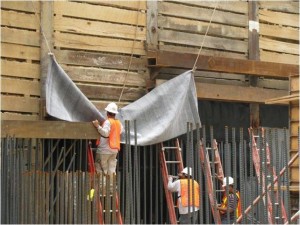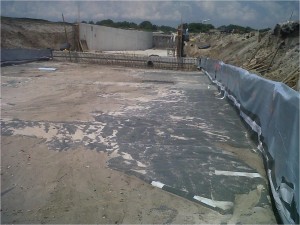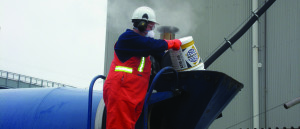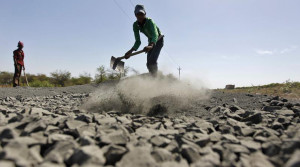Crystalline Waterproofing: An Innovative Solution
10th May 2016 Concrete WaterproofingExternal membrane waterproofing is a system based on placing an external barrier protection on the surface of any structure. The strength of this waterproofing technique is dependent on the strength and accuracy of the membrane application process, as well as how the joints and details are waterproofed.
This technique comprises of a tanking medium applied to a structure in order to physically keep out the water. The tanking mediums can be applied internally or externally, however by their very nature these mediums must be 100% defect free to work when tested under heavy hydrostatic water pressure.
In reality, we all know that no tanking or waterproofing system can be applied 100% defect free. This is even more pertinent for the externally applied systems which once applied are generally then buried under a substantial amount of backfill which in turn makes the form and feasibility of remedial treatment very difficult.
To fix an externally applied membrane requires a considerable amount of time and effort. Sometimes it is unaffordable for a customer to spend a lot of the construction schedule doing the waterproofing, especially when they consider excavation and the reality that there is always a danger of sliding earth, especially during the infamous Indian monsoons.
That’s why waterproofing structurally (as opposed to externally) and not dependent on any membrane or coating is the correct way in creating a durable structure. Crystalline concrete waterproofing systems are a reactive technology that makes the concrete structure self-resistant to water without any coating or membrane. Crystalline waterproofing is the only system that can be applied from the negative side, and also works under a high water pressure up to 140m.
Working with crystalline is easy, convenient, and the product is performance oriented. You save time and money, which doesn’t only add to the technical value of a project, but also the monetary value attributed to the building. The add-on is that crystalline waterproofing materials also fill cracks of up to 0.5mm, which generally develop due to temperature fluctuation and heat of hydration.
In conclusion, crystalline waterproofing is a smart system that has the ability to overcome the shortfalls of most other waterproofing systems.











 SMART CONCRETE®
SMART CONCRETE®